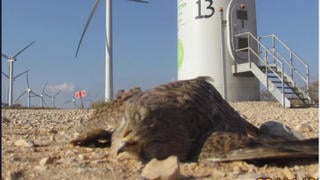
Did a biology experiment by ninth grade students reveal a "dark truth" about the dangers of Wi-Fi? No, that is not clear: The study was conducted as a classroom experiment without the proper scientific controls of a professional lab experiment. The story has been making the rounds for a few years in the form of videos, blog posts, and news stories.
The latest version of the story being shared originated from an article published by Dr. Farrah MD on August 29, 2018, titled "A Biology Experiment By 9th Grade Students Reveals A Dark Truth About Wi-Fi; Gains The Attention Of Scientists" (archived here). It opened:
For the students to see more success, they always have to find ways to connect with their school works by making it more interesting and personal.
This was the case of a group of grade 9 students at a school in northern Jutland. They recently embarked on a biology experiment inspired by their own personal experiences with concentrating
Lea Nielsen, one of the students, explained:"We all think we have experienced difficulty concentrating in school if we had slept with the phone next to our head, and sometimes also experienced having difficulty sleeping."
Users on social media only saw this:
A Biology Experiment By 9th Grade Students Reveals A Dark Truth About Wi-Fi; Gains The Attention Of Scientists
"It is truly frightening that there is so much effect, so we were very shocked by the result"
The study aimed to determine whether sleeping close to their mobile phones caused the students to have trouble concentrating the next morning. So, they created an experiment that placed shrub seeds next to wireless routers. Dr. Farrah MD's blog wrote:
The group of girls designed an experiment with the aim to investigate the impact on living cells of wi-fi radiation. In the experiment, cress seeds were chosen to be used. The girls take 400 seeds and separated them out across 12 different trays. Six of the trays were placed in each of 2 rooms which were both kept at the same temperature. Throughout the experiment, both sets of trays were given the same amount of water and access to sunlight.
In order to create a basis for their experiment, trays in one room were placed next to two Wi-Fi routers. These routers transmit the same type of radiation - the one that can be observed from our cell phones. Through this, the students were able to recreate the impact of sleeping with your phone on your bedside table, next to your head.
After 12 days, the result of their experiment was shocking. There was a huge difference between the two sets of trays. The cress seeds in the first room were growing well, appearing healthy and flourishing in their environment. On the other hand, the seeds that were placed next to the router showed no real growth at all. Some of the seeds could even be observed showing signs of mutation or dying off entirely.
Photos from the experiment in Farrah's blog appear to have been taken from this Danish website.
Media outlets and bloggers have been attracted to the fact that 15-year-old schoolchildren reached these conclusions. The subtext is that the students' findings were so incredible they got the attention of the scientific community.
Even though the experiment may have worked well within the confines of a classroom experiment, the student researchers likely did not account for proper control variables when conducting their study. Also, why were wireless signals from a mobile phone to blame and not other factors? A Guardian columnist wrote of the experiment:
Quite why wi-fi got blamed for this, I'm not wholly sure, since the wi-fi in their rooms is unlikely to change depending on how close they are to their phones, but anyway, on we go.
Norwegian science journalist Gunnar Tjomlid took a closer look at the study and posted a blog about it (translated by Google from Norwegian):
Honestly, people. What is this? We have published around 60 years of research in at least 1,300 peer-reviewed studies that are essentially unable to find any effect on EM radiation cells in the frequency range in question. Nothing. The World Health Organization (WHO) went through 25,000 articles on the topic published over the last 30 years without finding any evidence that such radiation can have a biological effect. Should a school visit overturn this? Doubtful.
Nor is it just the empirical evidence that is missing. It is also theoretically very unlikely, or even impossible, to have such an effect. The radiation we are talking about is non-ionizing. This means that the energy in the radiation is too low to break down molecular bonds and damage DNA, ergo it can not lead to mutations and cancer.
Another blogger noted that the girls stopped the experiment on day 13. Pepijn van Erp said:
The problem is that due to a difference in temperature of just a few degrees, it can already take a couple of days for the cress to grow to the same height. If there was indeed a difference in temperature due to the placement of the laptops, it would be likely that the WiFi group could have germinated and grown similar to the control group if it was allowed to grow on for a couple of days. They were just looking for the result they had in their mind beforehand.
Even though the claims have received media attention, schoolroom science should not be held to the same standard as peer-reviewed scientific research.
The students appear to have done an admirable job within the confines of a classroom study. Still, it would seem media outlets and bloggers could have shown some skepticism, or asked further questions, when reporting on a school science project.















